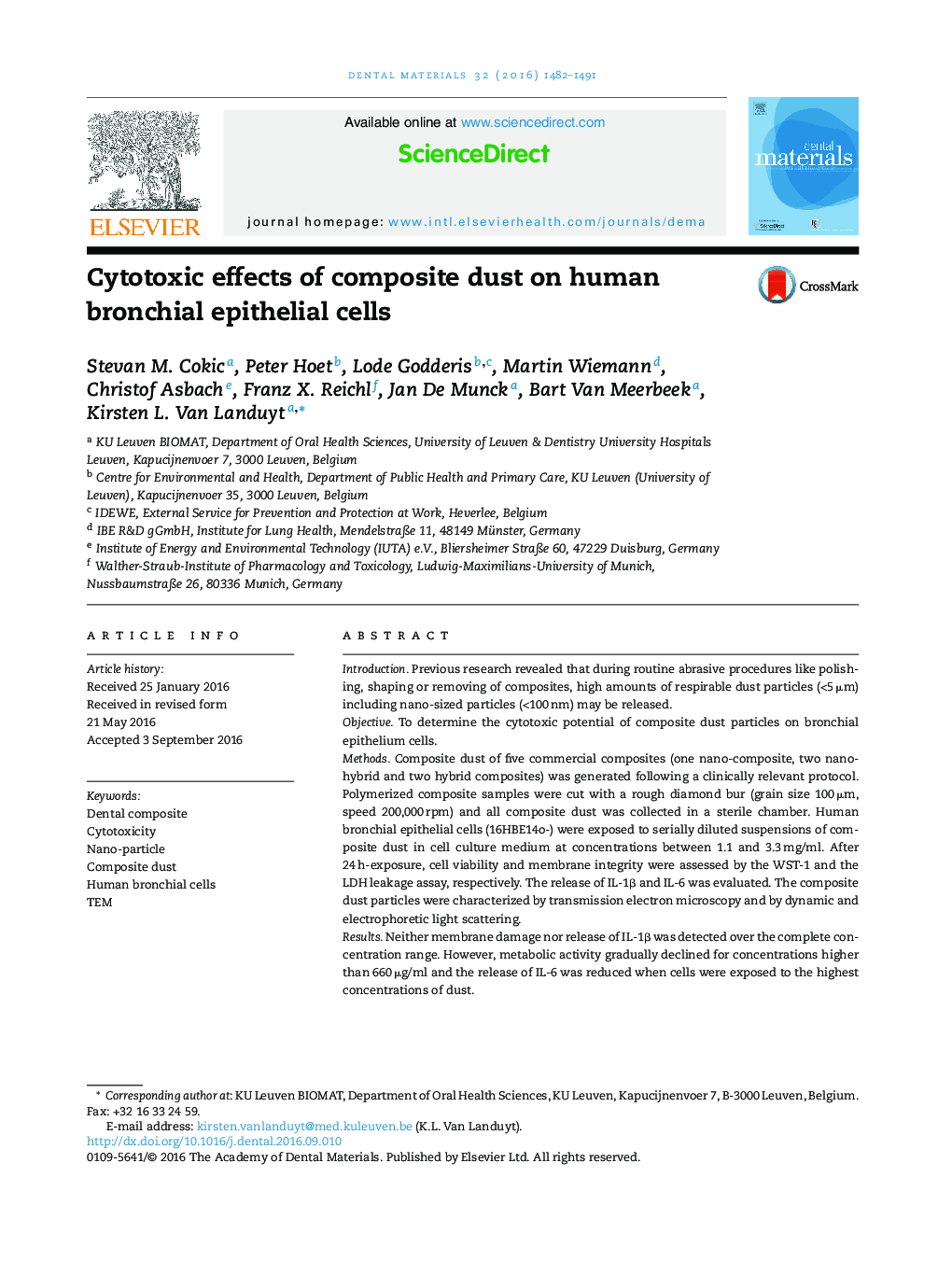| Article ID | Journal | Published Year | Pages | File Type |
|---|---|---|---|---|
| 5433129 | Dental Materials | 2016 | 10 Pages |
IntroductionPrevious research revealed that during routine abrasive procedures like polishing, shaping or removing of composites, high amounts of respirable dust particles (<5 μm) including nano-sized particles (<100 nm) may be released.ObjectiveTo determine the cytotoxic potential of composite dust particles on bronchial epithelium cells.MethodsComposite dust of five commercial composites (one nano-composite, two nano-hybrid and two hybrid composites) was generated following a clinically relevant protocol. Polymerized composite samples were cut with a rough diamond bur (grain size 100 μm, speed 200,000 rpm) and all composite dust was collected in a sterile chamber. Human bronchial epithelial cells (16HBE14o-) were exposed to serially diluted suspensions of composite dust in cell culture medium at concentrations between 1.1 and 3.3 mg/ml. After 24 h-exposure, cell viability and membrane integrity were assessed by the WST-1 and the LDH leakage assay, respectively. The release of IL-1β and IL-6 was evaluated. The composite dust particles were characterized by transmission electron microscopy and by dynamic and electrophoretic light scattering.ResultsNeither membrane damage nor release of IL-1β was detected over the complete concentration range. However, metabolic activity gradually declined for concentrations higher than 660 μg/ml and the release of IL-6 was reduced when cells were exposed to the highest concentrations of dust.SignificanceComposite dust prepared by conventional dental abrasion methods only affected human bronchial epithelial cells in very high concentrations.
